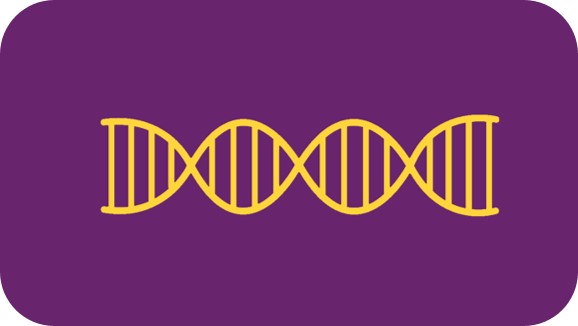Next Generation Sequencing
The advent of Next Generation Sequencing has seen the use of genomic research expand at a tremendous rate. Sequencing a human genome, first completed in 2003 and having taken 10 years of work on hundreds of sequencers, can now be carried out in a day on a single instrument. NGS utilises a massively parallel sequencing approach, allowing for the generation of billions of base reads in a single run.
NGS at Durham University
DBS Genomics currently operates an Illumina HiSeq 2500 and an Illumina MiSeq, allowing us to offer a broad range of applications and study sizes. Illumina sequencers are the most trusted and widely used systems worldwide, delivering data of the highest quality and accuracy.
The HiSeq 2500 is a flexible platform featuring two run modes, rapid run and high output run. Rapid run mode allows quick and efficient processing of samples, and supports longer paired-end reads of 150bp, enabling great depth of coverage (up to 150 million single reads per lane or 300 million paired-end reads per lane). High output mode offers the greatest depth of coverage, generating up to 1Tb of data (up to 200-250 million single reads per lane or 400-500 million paired-end reads per lane) in six days using HiSeq version 4 reagents, an ideal option for larger studies.
The MiSeq system facilitates a wide range of sequencing applications with an output range of 540Mb to 15Gb per run, single and paired-end reads up to 2x300bp, and up to 25 million reads per run.
We are able to offer a broad range of applications, including:
- Whole-genome sequencing
- Targeted re-sequencing
- Whole transcriptome sequencing
- De-novo sequencing and metagenomics
- Epigenetics and gene regulation
- Small genome sequencing
- Targeted gene expression profiling
We currently accept user-prepared Illumina compatible sequencing libraries, and also offer a library preparation service if required. The cost of an NGS experiment will vary depending upon the application and run parameters required. Advice can be given on the number of lanes which will be needed to complete your project. It is possible to run multiple libraries per lane depending upon the library type, number of reads and depth of coverage required. If you wish to make an enquiry about running an NGS experiment, please contact us and a member of the DBS Genomics team will be happy to discuss available options and pricing.
How to send your libraries
The success of your sequencing is highly dependent upon accurate quality assessment and quantification of your completed library. Quality assessment should be carried out using a Bioanalyser or Tapestation, and the data submitted along with your library. Libraries should be quantified by qPCR, as this sensitive method measures only templates which have both adapter sequences on either end and will subsequently form clusters on a flowcell for sequencing. If you are multiplexing samples in a pool, QC should be carried out on each individual sample. Poor quality samples should be excluded, and all samples standardised to the same concentration so that each sample is accurately represented within the pool. Pooling should then be carried out according to the instructions provided with your chosen library preparation kit.
We require at least 10ul of pooled library at a concentration of 10nM. Samples should be clearly labelled and secured, and sent to us on sufficient dry ice to ensure they remain frozen until arrival. Confirmation of QC will be carried out on your library before we proceed with sequencing, and you will be notified of any discrepancies or concerns.
When your libraries are ready to be posted, please include a completed NGS Library Submission Form.
Receiving your data
The timeframe in which you will receive your data is dependent upon the experimental parameters you have chosen. Please note that we must fill all lanes of a flowcell before we can proceed with your sequencing in order to ensure the service is cost-effective. Upon completion of a sequencing run the raw FASTQ files generated are put through our filtering pipeline to remove adapter and index sequences, and a quality filter removes reads which are unsuitable for downstream analysis. These processed FASTQ files are posted to you on a hard drive, along with the raw FASTQ files and associated QC data if required.
For additional cost we are able to offer a range of further bioinformatic services to process and analyse the data, including alignment to reference genome, production of sequence alignment maps (SAM files), or exon expression analysis. Please contact us to discuss your requirements and costing.
Contact Us

Department of Biosciences
Durham University
Stockton Road
Durham
DH1 3LE


/prod01/prodbucket01/media/durham-university/departments-/biosciences/83453-1-1595X1594.jpg)